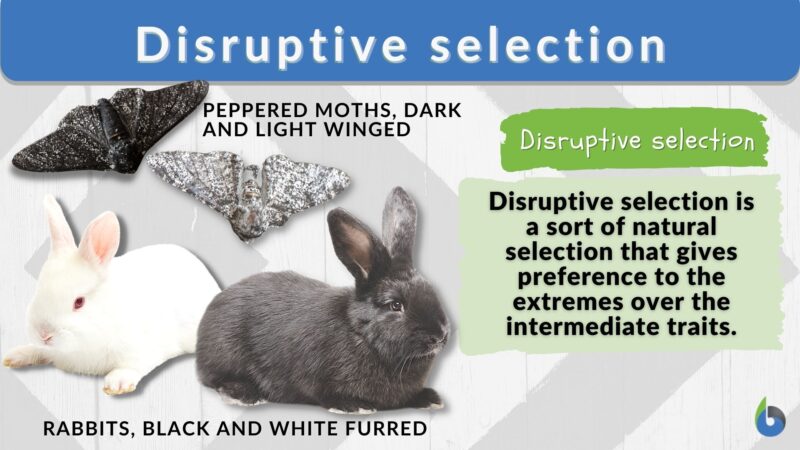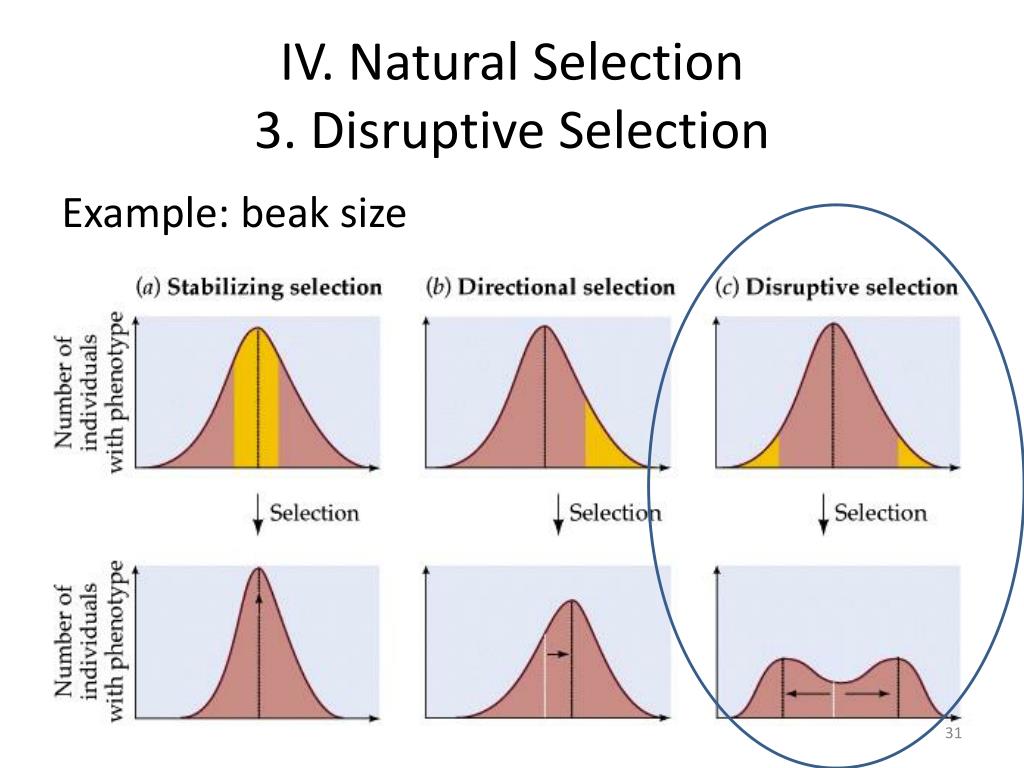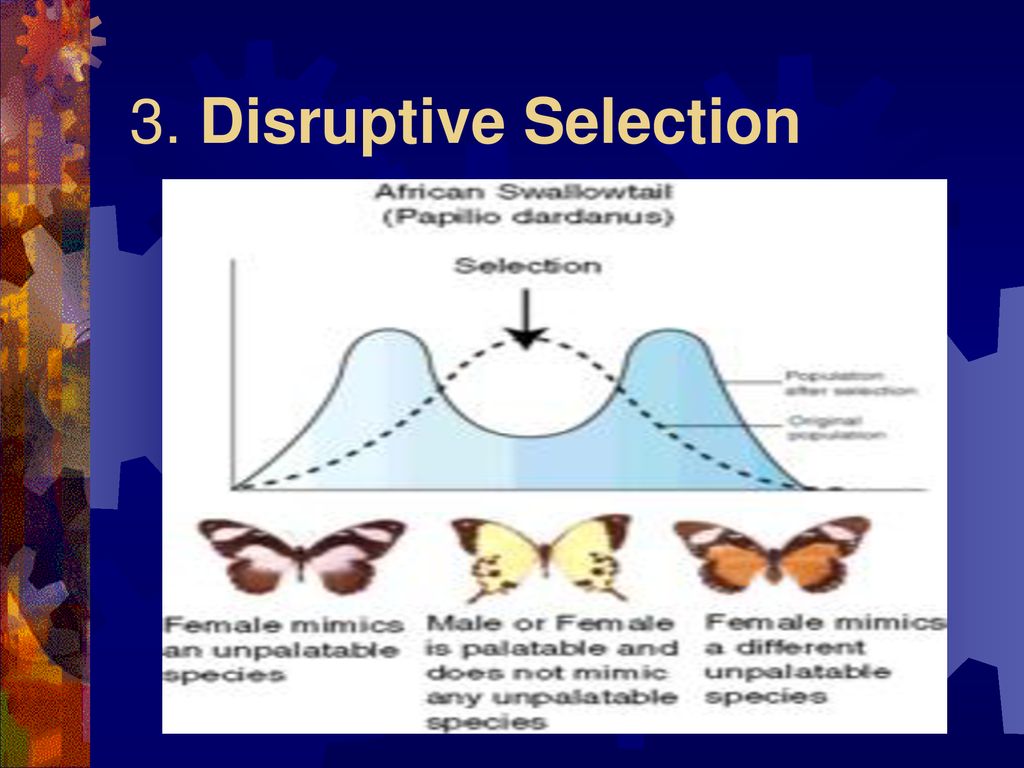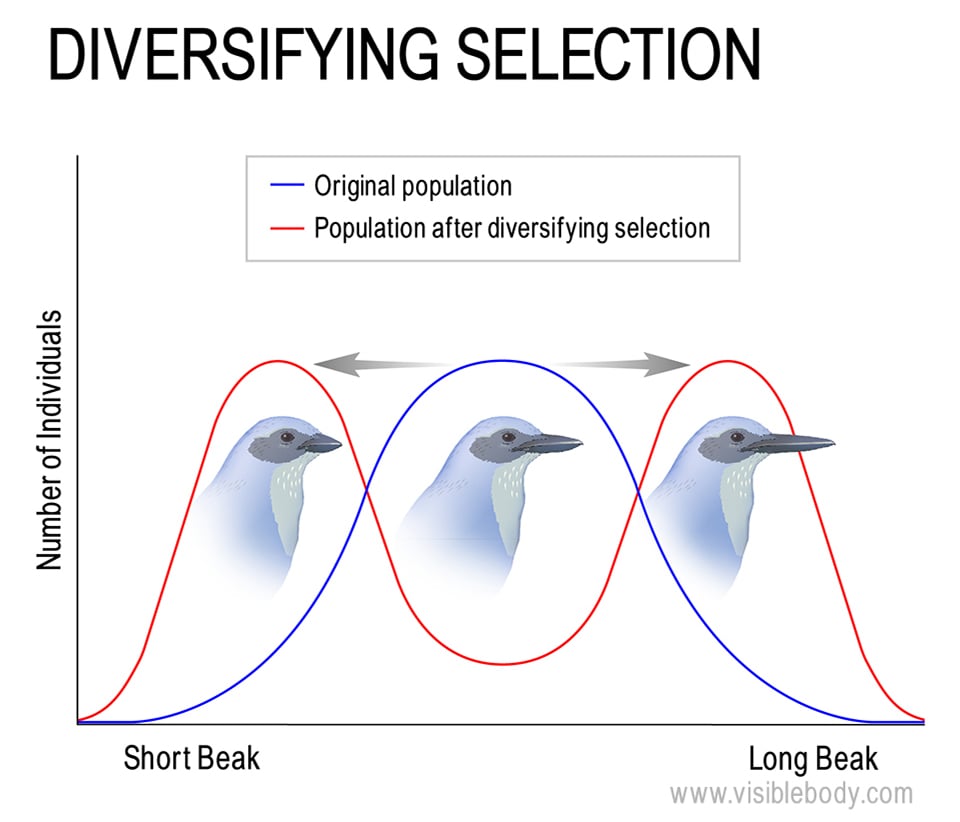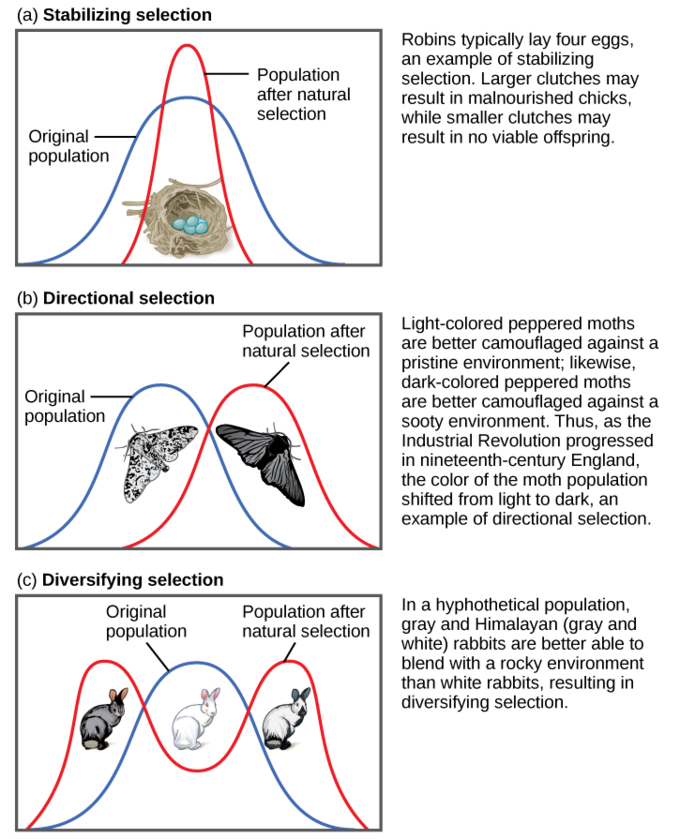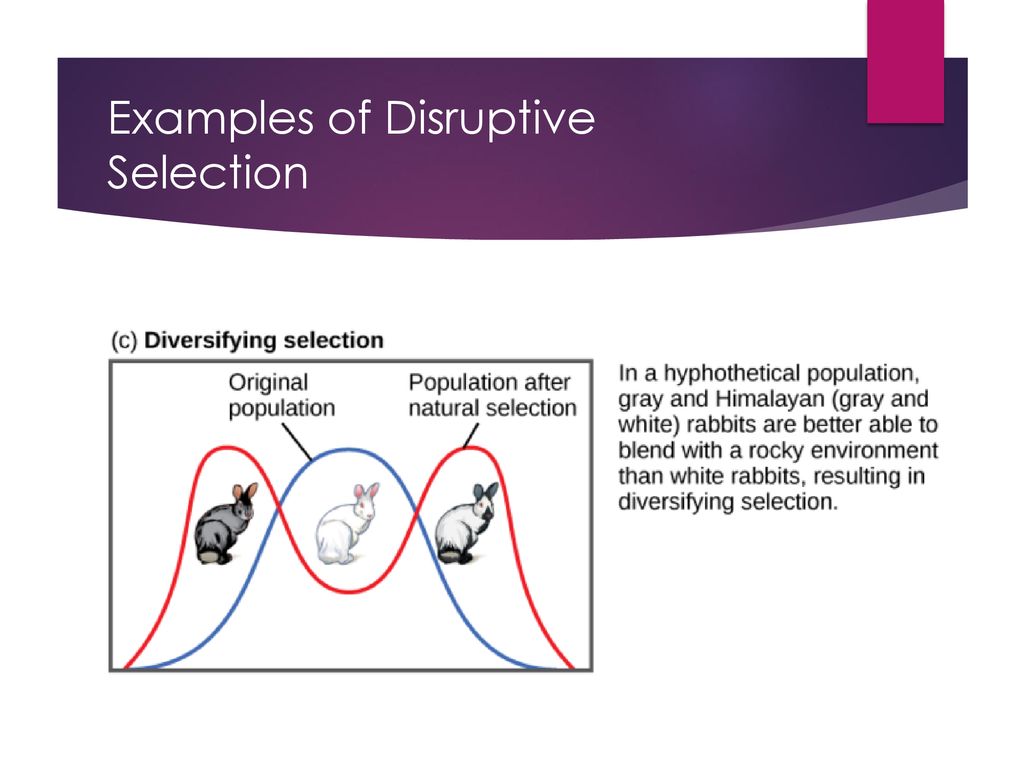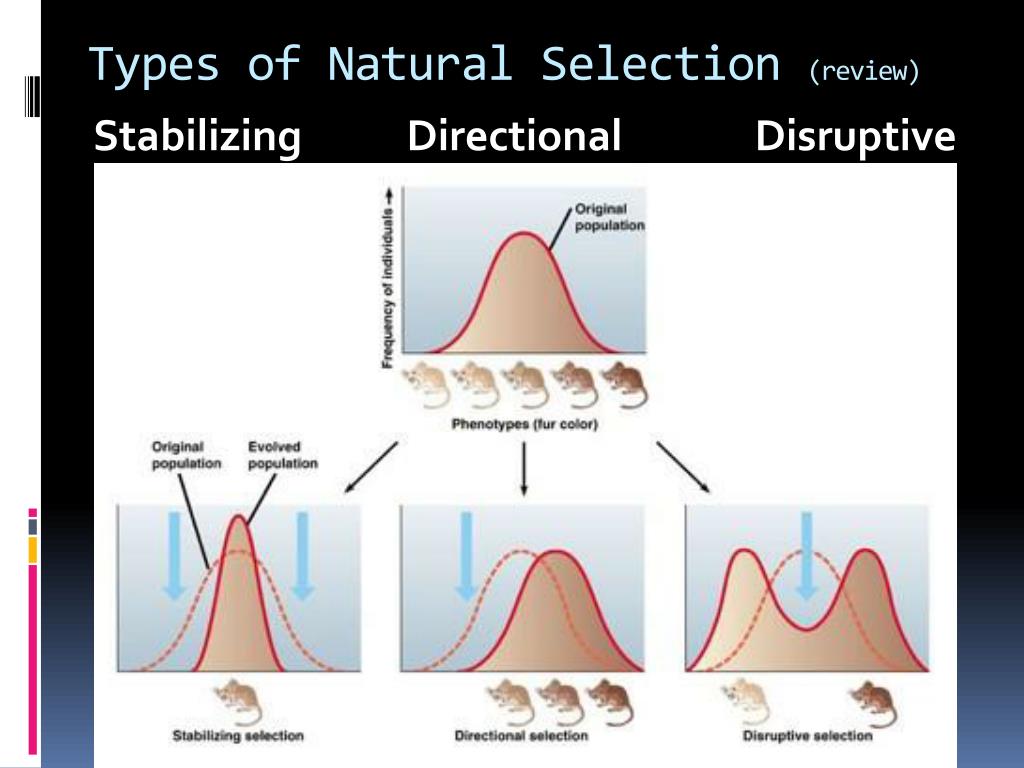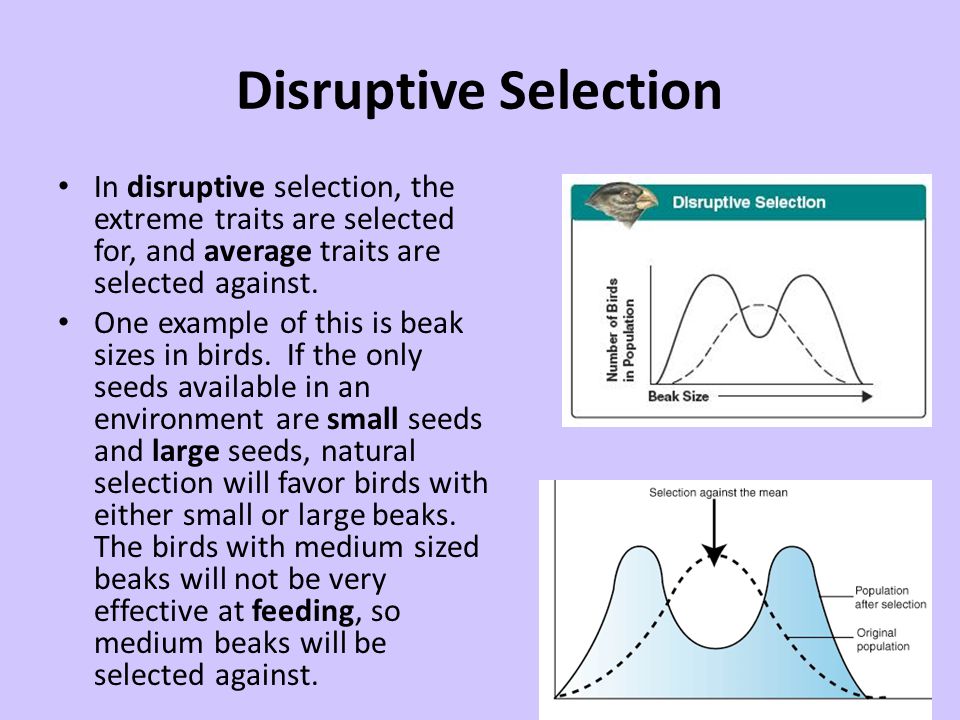Disruptive Selection Is A Mechanism Of Natural Selection That
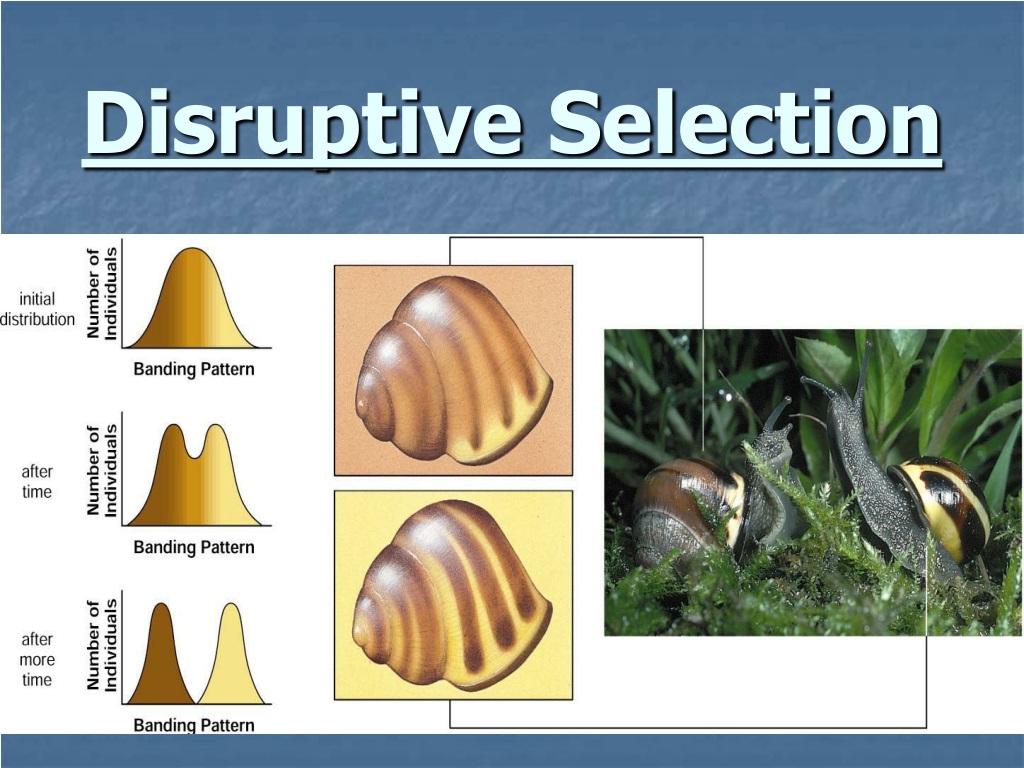
The finches of the Galapagos Islands, Darwin's famed subjects, offer a living testament to the power of evolution. But beyond the simple story of adaptation, lies a more nuanced understanding of how natural selection molds life. Specifically, disruptive selection, a powerful force, is pushing populations in unexpected directions, favoring extremes over the average, and potentially driving the emergence of new species.
This article delves into the intricacies of disruptive selection, examining its mechanisms, its impact on biodiversity, and its role in shaping the future of life on Earth. From theoretical models to real-world examples, we'll explore how this often-overlooked mode of natural selection is rewriting the rules of evolution.
Understanding Disruptive Selection
At its core, disruptive selection is a mode of natural selection that favors individuals with extreme phenotypes over those with intermediate phenotypes. This means that individuals at both ends of a trait distribution are more likely to survive and reproduce than individuals with traits closer to the average.
Imagine a population of birds where beak size is the trait under selection. If birds with very small beaks are adept at eating small seeds, and birds with very large beaks are better at cracking open large nuts, while birds with medium-sized beaks are inefficient at both, disruptive selection will occur.
This process leads to a bimodal distribution, where the population splits into two distinct groups, each adapted to a specific niche. Disruptive selection differs from directional selection, which favors one extreme phenotype, and stabilizing selection, which favors the average phenotype.
The Mechanisms Driving Disruptive Selection
Several factors can contribute to disruptive selection. One of the most important is environmental heterogeneity.
If a population inhabits an environment with diverse resources, individuals that specialize in exploiting particular resources may have a higher fitness than generalists. This can lead to the evolution of distinct morphs adapted to different parts of the environment.
Competition can also drive disruptive selection. For example, if individuals with intermediate traits are outcompeted by individuals with extreme traits, the population may split into two groups, each specializing in a different resource or niche.
Frequency-dependent selection, where the fitness of a phenotype depends on its frequency in the population, can also play a role. If rare phenotypes have an advantage, disruptive selection can occur, promoting the maintenance of multiple distinct morphs.
Examples of Disruptive Selection in Action
While disruptive selection can be challenging to demonstrate directly in nature, there are several well-documented examples. One of the classic examples is the black-bellied seedcracker (Pyrenestes ostrinus), a finch found in Cameroon.
This species exhibits two distinct beak sizes: a large-beaked morph specialized for cracking hard seeds, and a small-beaked morph specialized for handling soft seeds. Intermediate-sized beaks are less efficient at either task, resulting in lower survival rates for individuals with these beak sizes.
Another example comes from the three-spined stickleback (Gasterosteus aculeatus). In some lakes, sticklebacks have evolved into two distinct morphs: a benthic morph, which feeds on invertebrates in the bottom sediments, and a limnetic morph, which feeds on plankton in the open water. These morphs differ in body size, morphology, and behavior, reflecting adaptations to their respective niches.
Studies on sexual selection have also revealed instances of disruptive selection. In some species of insects and fish, males may exhibit alternative mating strategies, with some males being large and aggressive, and others being small and sneaky. Intermediate-sized males may be less successful at attracting mates than either of these extremes.
The Role of Disruptive Selection in Speciation
Disruptive selection is thought to play an important role in the process of speciation, the formation of new species. By driving a population apart into two or more distinct groups, disruptive selection can create the conditions necessary for reproductive isolation to evolve.
If individuals with extreme phenotypes preferentially mate with individuals that resemble them, this can lead to assortative mating, which further reinforces the divergence between the groups. Over time, the two groups may accumulate genetic differences that prevent them from interbreeding, eventually leading to the formation of two distinct species. This is a crucial aspect of evolutionary biology.
However, speciation via disruptive selection is not always guaranteed. Gene flow between the diverging groups can counteract the effects of selection, preventing the accumulation of sufficient genetic differences to cause reproductive isolation.
Challenges and Future Directions
Studying disruptive selection in nature can be challenging. It requires detailed data on the fitness of individuals with different phenotypes, as well as information on the environmental factors that are driving selection.
Furthermore, it can be difficult to disentangle the effects of disruptive selection from other evolutionary processes, such as gene flow and genetic drift. Technological advancements are enabling researchers to study this phenomenon more effectively.
Future research should focus on developing more sophisticated methods for detecting disruptive selection in natural populations, as well as on understanding the genetic basis of the traits that are under selection. It’s also important to investigate the interplay between disruptive selection and other evolutionary processes, such as sexual selection and gene flow.
Understanding disruptive selection is crucial for predicting how populations will respond to environmental change. As habitats become increasingly fragmented and heterogeneous due to human activities, disruptive selection may become more prevalent, leading to the evolution of novel adaptations and potentially even the emergence of new species.
Conservation efforts should take into account the potential for disruptive selection to shape the evolution of populations. Protecting diverse habitats and maintaining connectivity between populations can help to promote the long-term survival of species in a rapidly changing world. This is what conservation biology addresses.
